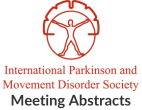Clinical and molecular features of a Chinese family with spinocerebellar ataxia type 6
Objective: To evaluate the clinical manifestation, CAG repeats of abnormal alleles, mitochondrial function and treatment of spinocerebellar ataxia type 6To evaluate the clinical manifestation, CAG…Respiratory Function and Functional Decline in Spinocerebellar Ataxia Type 2
Objective: To evaluate the relationship between the values of Peak Expiratory Flow rate (PEFr), Maximum Inspiratory Pressure (MIP), the presence of respiratory complaints with disease…Prospective study of cognition in SCA2
Objective: Evaluate prospectively cognitive dysfunction in subjects with SCA2 using Mini Mental Examination (MMSE) and Montreal Cognition Assesment (MOCA), looking for correlation between cognitiion and motor…Spinocerebellar ataxias in Southern Brazil: genotypic and phenotypic evaluation of 213 families
Objective: To describe and correlate the genotype and phenotype of patients diagnosed with SCAs. Background: Spinocerebellar Ataxias (SCAs) are neurodegenerative diseases with autosomal dominant inheritance…Need of next generation sequencing technology to de-convolute autosomal recessive cerebellar ataxias in India
Objective: Comparison of two next generation platform to screen ARCA patients in Indian population Background: India is deficient with the molecular screening of the ARCAs.…Spinocerebellar degeneration in Minami-Boso area of Japan – A hospital-based retrospective analysis
Objective: Elucidate the present status of clinical practice for spinocerebellar degeneration (SCD) in Minami-Boso area to plan future direction for managing this intractable condition. Background:…Distinct abnormality of movement-related cortical potential between patients with Holmes tremor and cerebellar degeneration
Objective: This study aims to investigate the role of cerebellum and the olivodentatorubral pathway in generating movement-related cortical potential (MRCP). Background: Cerebellum and its connecting…Cortical and brainstem neurodegeneration associate with the clinical severity in spinocerebellar ataxia patients
Objective: The aim of the study was to know the association of degree of atrophy in brain areas with clinical severity in SCA patients. Background:…Urinary symptoms and Urodynamic findings in patients with SCAs and DRPLA
Objective: To investigate the lower urinary tract symptoms (LUTS) and findings of the urodynamic study (UDS) in patients with spinocerebellar ataxia (SCA) and dentatorubral pallidoluysian…Hearing Evaluation (Peripheral and Central) in Patients with Sporadic Ataxia
Objective: To describe the audiological and electrophysiological results in patients with sporadic ataxia. Background: Patients with progressive non-familial adult ataxia are classified into a sporadic…
- « Previous Page
- 1
- …
- 4
- 5
- 6
- 7
- 8
- 9
- Next Page »
